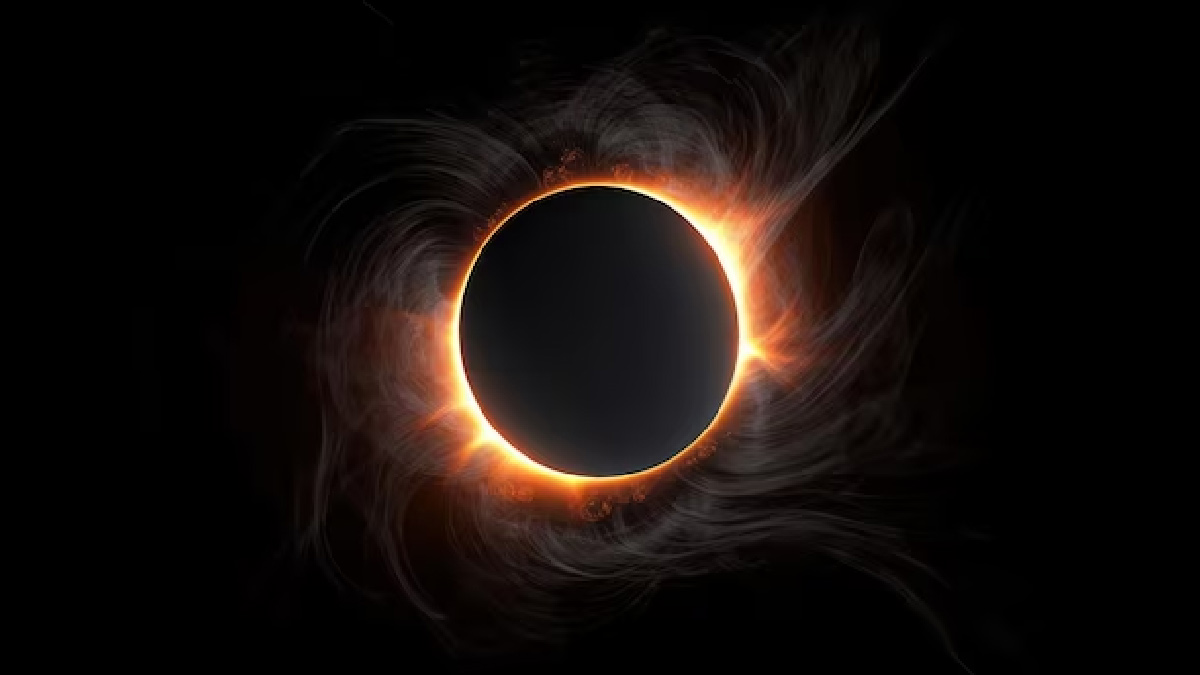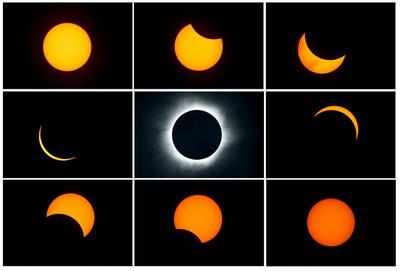Introduction
The Dance Of Celestial Bodies Has Fascinated Humanity For Centuries, And Among These Cosmic Events, A Solar Eclipse Stands Out As A Breathtaking Spectacle. In This Comprehensive Guide, We Unravel The Mysteries Of Solar Eclipses In India, Exploring The Science Behind Them, Cultural Significance, And The Awe-Inspiring Moments They Create In The Indian Skies.
Total Solar Eclipse 2024: As we all know that in the year 2024, the first Solar Eclipse is going to take place on April 8. All the stargazers must be excited to know that they are going to get this amazing opportunity to watch this celestial phenomenon soon so it is advised to the people that they can mark their dates to capture this moment.
Though if we see things astrologically then occurrence of Solar Eclipse or Surya Grahan is never be favourable for anyone whether this Solar Eclipse is taking place in India or outside India.
Understanding Solar Eclipses: A Celestial Ballet
- Solar Eclipse Defined: A Solar Eclipse Occurs When The Moon Passes Between The Sun And The Earth, Obscuring All Or Part Of The Sun’s Light. This Captivating Alignment Creates Mesmerizing Celestial Phenomena, Capturing The Attention Of Sky Gazers And Scientists Alike.
- Types Of Solar Eclipses: Solar Eclipses Come In Various Forms, Including Total, Partial, And Annular. A Total Solar Eclipse Happens When The Moon Completely Covers The Sun, Casting A Shadow On Earth. In A Partial Solar Eclipse, Only A Portion Of The Sun Is Obscured, While An Annular Eclipse Occurs When The Moon Covers The Center Of The Sun, Leaving A Ring-Like Appearance.
The Science Behind Solar Eclipses
| Cities | Time |
| Dallas, Texas | 1:40-1:44 PM CDT |
| Idabel, Oklahoma | 1:45-1:49 PM CDT |
| Little Rock, Arkansas | 1:51-1:54 PM CDT |
| Poplar Bluff, Missouri | 1:56-2:00 PM CDT |
| Paducah, Kentucky | 2-2:02 PM CDT |
| Carbondale, Illinois | 1:59-2:03 pm CDT |
| Evansville, Indiana | 2:02-2:05 pm CDT |
| Cleveland, Ohio | 3:13-3:17 pm EDT |
| Erie, Pennsylvania | 3:16-3:20 pm EDT |
| Buffalo, New York | 3:18-3:22 pm EDT |
| Burlington, Vermont | 3:26-3:29 pm EDT |
| Lancaster, New Hampshire | 3:27-3:30 pm EDT |
| Caribou, Maine | 3:32-3:34 pm EDT |
- Orbital Mechanics: Solar Eclipses Are The Result Of The Precise Alignment Of The Sun, Moon, And Earth. The Moon’s Elliptical Orbit Intersects With The Earth’s Orbit Around The Sun At Specific Points, Creating Opportunities For These Celestial Alignments.
- Solar Eclipse Paths: The Path Of A Solar Eclipse, Known As The “Path Of Totality,” Is The Region On Earth Where The Total Eclipse Is Visible. Depending On The Geometry Of The Alignment, This Path Can Vary With Each Eclipse, Influencing Where And How People Experience The Event.
Solar Eclipses In The Indian Context: Geographical Considerations
- Frequency And Visibility: Solar Eclipses Are Relatively Common, But Their Visibility Varies Based On Geographical Location. India, Due To Its Diverse Landscape, Witnesses Solar Eclipses At Different Levels Of Visibility. The Frequency Of Solar Eclipses Visible In India Adds To The Anticipation Surrounding These Events.
- Path Of Totality In India: The Path Of Totality, Where The Total Solar Eclipse Is Visible, Might Pass Through Certain Regions Of India During Specific Events. Understanding The Path Helps Enthusiasts Plan Their Observations And Experience The Complete Celestial Phenomenon.
Historical Significance: Solar Eclipses In Indian Culture

- Astrological And Mythological Beliefs: In Indian Culture, Solar Eclipses Carry Astrological And Mythological Significance. The Alignment Of Celestial Bodies During An Eclipse Is Often Linked To Stories From Hindu Mythology, Contributing To Cultural Beliefs And Practices Associated With These Events.
- Rituals And Traditions: Solar Eclipses Often Prompt Specific Rituals And Traditions In India. Some Communities Engage In Practices Such As Taking A Ritual Bath, Fasting, And Performing Prayers To Mitigate The Perceived Negative Effects Of The Celestial Occurrence.
Solar Eclipse Observation: Safety Measures And Tips
- Protecting Your Eyes: Observing A Solar Eclipse Requires Caution To Protect Your Eyes From Harmful Solar Radiation. Specialized Solar Viewing Glasses, Solar Filters, Or Indirect Viewing Methods, Such As Pinhole Projectors, Ensure A Safe And Enjoyable Experience.
- Choosing Observation Locations: Selecting An Optimal Observation Location Is Crucial For Experiencing A Solar Eclipse. Consider Factors Like Weather Conditions, Light Pollution, And The Path Of Totality To Enhance Your Chances Of Witnessing The Celestial Event With Clarity.
Notable Solar Eclipses In Indian History
- July 22, 2009 Eclipse: The Total Solar Eclipse On July 22, 2009, Created A Moment Of Wonder Across India. The Path Of Totality Crossed Through Various Regions, Allowing Enthusiasts To Witness The Sun’s Complete Obscurity By The Moon.
- December 26, 2019 Eclipse: Another Notable Event Occurred On December 26, 2019, When An Annular Solar Eclipse Graced The Indian Skies. This Unique Ring-Of-Fire Eclipse Captured The Imagination Of Sky Watchers Across The Country.
Modern-Day Solar Eclipse Expeditions: Chasing Celestial Wonders

- Solar Eclipse Tourism: With The Rise Of Interest In Celestial Events, Solar Eclipse Tourism Has Gained Popularity. Enthusiasts And Astronomers Embark On Expeditions To Locations Within The Path Of Totality, Enhancing Their Chances Of Experiencing The Awe-Inspiring Beauty Of A Total Solar Eclipse.
- Technological Advancements In Observation: Modern Technology Has Revolutionized The Observation Of Solar Eclipses. Live Streaming, High-Resolution Telescopes, And Satellite Imagery Provide Opportunities For People Worldwide To Witness These Celestial Events In Real-Time, Regardless Of Their Geographical Location.
Upcoming Solar Eclipses In India: Anticipation And Preparation
- 2021 Annular Eclipse: On June 10, 2021, An Annular Solar Eclipse Graced The Indian Subcontinent, Captivating The Attention Of Sky Gazers. The Path Of Annularity Swept Across Northern Regions, Offering A Unique Celestial Display.
- Future Solar Eclipses: Anticipation Builds As Future Solar Eclipses Are Forecasted To Be Visible In Different Parts Of India. Enthusiasts And Astronomers Eagerly Await These Events, Marking Their Calendars For Opportunities To Witness The Dance Of The Sun, Moon, And Earth.
Cultural And Scientific Collaboration: The Intersection Of Tradition And Astronomy
- Community Engagement And Education: Solar Eclipses Provide An Excellent Opportunity For Community Engagement And Education. Collaborations Between Astronomers, Educational Institutions, And Local Communities Contribute To A Broader Understanding Of Both The Scientific And Cultural Aspects Of These Celestial Events.
- Interdisciplinary Studies: The Intersection Of Traditional Beliefs And Modern Astronomy Creates A Rich Tapestry Of Interdisciplinary Studies. Scientists And Scholars Explore The Cultural Significance Of Solar Eclipses, Bridging The Gap Between Ancient Wisdom And Contemporary Scientific Understanding.
Conclusion: Embracing The Celestial Tapestry
Solar Eclipses In India Offer A Captivating Blend Of Scientific Wonder And Cultural Significance. From Their Celestial Origins To The Historical And Mythological Contexts, These Events Continue To Inspire Awe And Curiosity. Whether Observed Through Modern Technology Or Traditional Rituals, Solar Eclipses Serve As A Reminder Of The Interconnectedness Of The Cosmos And Our Place In The Vast Celestial Tapestry. As We Await Future Eclipses, May The Skies Above India Continue To Unfold The Magic Of These Celestial Dances, Inviting Us To Gaze Upward In Wonder And Contemplation.
